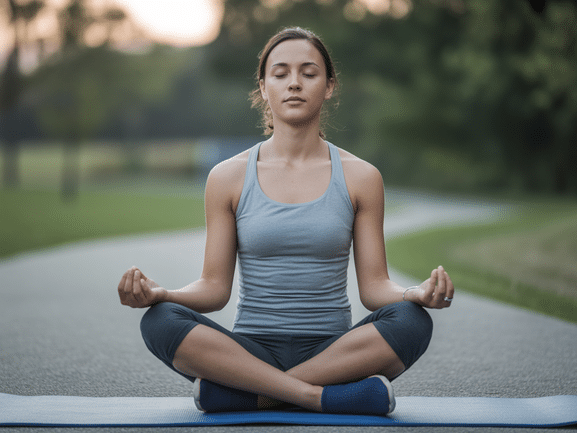<div itemprop="articleBody">
<p>In today's fast-paced digital world, young minds face unprecedented levels of stress and anxiety. From academic pressure to social media overwhelm, <strong>meditation for kids and teens</strong> has become more essential than ever. The good news? Teaching mindfulness to young people doesn't have to be complicated or boring.</p>
<p>Whether you're a parent looking to help your child manage school anxiety or a teenager seeking inner peace, this comprehensive guide will walk you through proven techniques that actually work. Let's explore how <strong>mindfulness exercises for children</strong> can transform young lives.</p>
<h2>Why Mindfulness Matters for Young Minds</h2>
<p>Research shows that children and teenagers who practice meditation demonstrate improved focus, better emotional regulation, and reduced anxiety levels. Moreover, early exposure to mindfulness creates lifelong habits that support mental well-being. The developing brain is particularly receptive to these practices, making youth the perfect time to start.</p>
<p>Studies from Harvard Medical School indicate that regular meditation practice can actually change brain structure, strengthening areas responsible for attention and emotional control. For young people navigating the challenges of growing up, these benefits are invaluable.</p>
<h2>5 Fun Meditation Techniques for Children (Ages 8-12)</h2>
<h3>1. Animal Breathing Adventures</h3>
<p>Transform breathing exercises into exciting animal adventures. Have children breathe like a sleepy bear (slow, deep breaths), a buzzing bee (humming on exhale), or a calm turtle (gentle, steady breathing). This approach makes <strong>kids yoga breathing</strong> engaging and memorable.</p>
<h3>2. The Magic Bubble Technique</h3>
<p>Encourage children to imagine blowing worries into magical bubbles, then watch them float away. This visualization helps kids process emotions while learning to let go of negative thoughts naturally.</p>
<h3>3. Body Scan Safari</h3>
<p>Guide children through a "safari" of their own body, noticing sensations from head to toe. "Let's visit the jungle of your shoulders – are they tense like a prowling tiger or relaxed like a sleeping sloth?"</p>
<h3>4. Gratitude Garden</h3>
<p>Create an imaginary garden where children "plant" things they're grateful for. This practice combines visualization with positive thinking, fostering both mindfulness and emotional well-being.</p>
<h3>5. The Peaceful Place Journey</h3>
<p>Help children visualize their perfect peaceful place – perhaps a cozy cabin, a sunny beach, or a magical forest. This technique provides a mental refuge they can access anytime stress arises.</p>
<h2>4 Effective Mindfulness Practices for Teenagers</h2>
<h3>1. The 5-4-3-2-1 Grounding Technique</h3>
<p>This powerful anxiety-busting technique involves identifying 5 things you can see, 4 you can touch, 3 you can hear, 2 you can smell, and 1 you can taste. It's particularly effective for managing test anxiety or social stress.</p>
<h3>2. Mindful Technology Breaks</h3>
<p>Since teenagers are digital natives, incorporating "mindful phone pauses" can be incredibly effective. Before checking social media, take three deep breaths and set an intention for the session.</p>
<h3>3. Progressive Muscle Relaxation</h3>
<p>Teach teens to systematically tense and release muscle groups. This practice is especially helpful for those who struggle with physical tension from stress or sports activities.</p>
<h3>4. Loving-Kindness Meditation</h3>
<p>Help teenagers develop self-compassion by practicing loving-kindness meditation. Starting with self-directed positive thoughts, then extending them to friends, family, and even difficult people in their lives.</p>
<h2>Creating a Sustainable Daily Routine</h2>
<p>Consistency trumps duration when it comes to <strong>young mindfulness practice</strong>. Here's how to build lasting habits:</p>
<ul>
<li><strong>Start small:</strong> 5 minutes for children, 10 minutes for teens</li>
<li><strong>Choose the right time:</strong> Morning for energy, evening for calm</li>
<li><strong>Create a special space:</strong> Designate a quiet corner with comfortable cushions</li>
<li><strong>Use reminders:</strong> Set gentle phone alerts or place notes in visible locations</li>
<li><strong>Track progress:</strong> Use simple charts or apps to monitor consistency</li>
</ul>
<p>Remember, the goal isn't perfection – it's progress. Some days will be easier than others, and that's perfectly normal. The key is returning to the practice with kindness and patience.</p>
<h2>Scientific Benefits of Meditation for Young Development</h2>
<p>Research consistently demonstrates that meditation impacts young brains in remarkable ways:</p>
<ul>
<li><strong>Improved attention span:</strong> Regular practice strengthens the prefrontal cortex</li>
<li><strong>Better emotional regulation:</strong> Reduced reactivity to stress and improved mood stability</li>
<li><strong>Enhanced academic performance:</strong> Better focus leads to improved learning outcomes</li>
<li><strong>Stronger social connections:</strong> Increased empathy and communication skills</li>
<li><strong>Better sleep quality:</strong> Relaxation techniques improve sleep patterns</li>
</ul>
<p>A comprehensive study published in the Journal of School Psychology found that students who participated in mindfulness programs showed significant improvements in attention, emotional regulation, and academic performance compared to control groups.</p>
<h2>Making Mindfulness Fun and Engaging</h2>
<p>The secret to successful <strong>teen meditation techniques</strong> lies in making the practice relevant and enjoyable. Consider these strategies:</p>
<ul>
<li>Use age-appropriate apps and guided meditations</li>
<li>Practice together as a family</li>
<li>Incorporate movement and yoga poses</li>
<li>Connect mindfulness to activities they already enjoy</li>
<li>Celebrate small wins and progress</li>
</ul>
<p>The <a href="https://vitalizen.app" rel="internal">Vitalizen.app platform</a> offers specialized guided sessions designed specifically for young practitioners, with experienced instructors who understand the unique needs of children and teenagers.</p>
<section id="faq" itemscope itemtype="https://schema.org/FAQPage">
<h2>Frequently Asked Questions</h2>
<div itemscope itemtype="https://schema.org/Question">
<h3 itemprop="name">How long should children meditate each day?</h3>
<div itemscope itemtype="https://schema.org/Answer" itemprop="acceptedAnswer">
<div itemprop="text">
<p>Start with 5 minutes for children aged 8-12 and gradually increase to 10-15 minutes as they become more comfortable. Teenagers can begin with 10 minutes and work up to 20 minutes. Quality matters more than quantity – consistent short sessions are better than sporadic long ones.</p>


